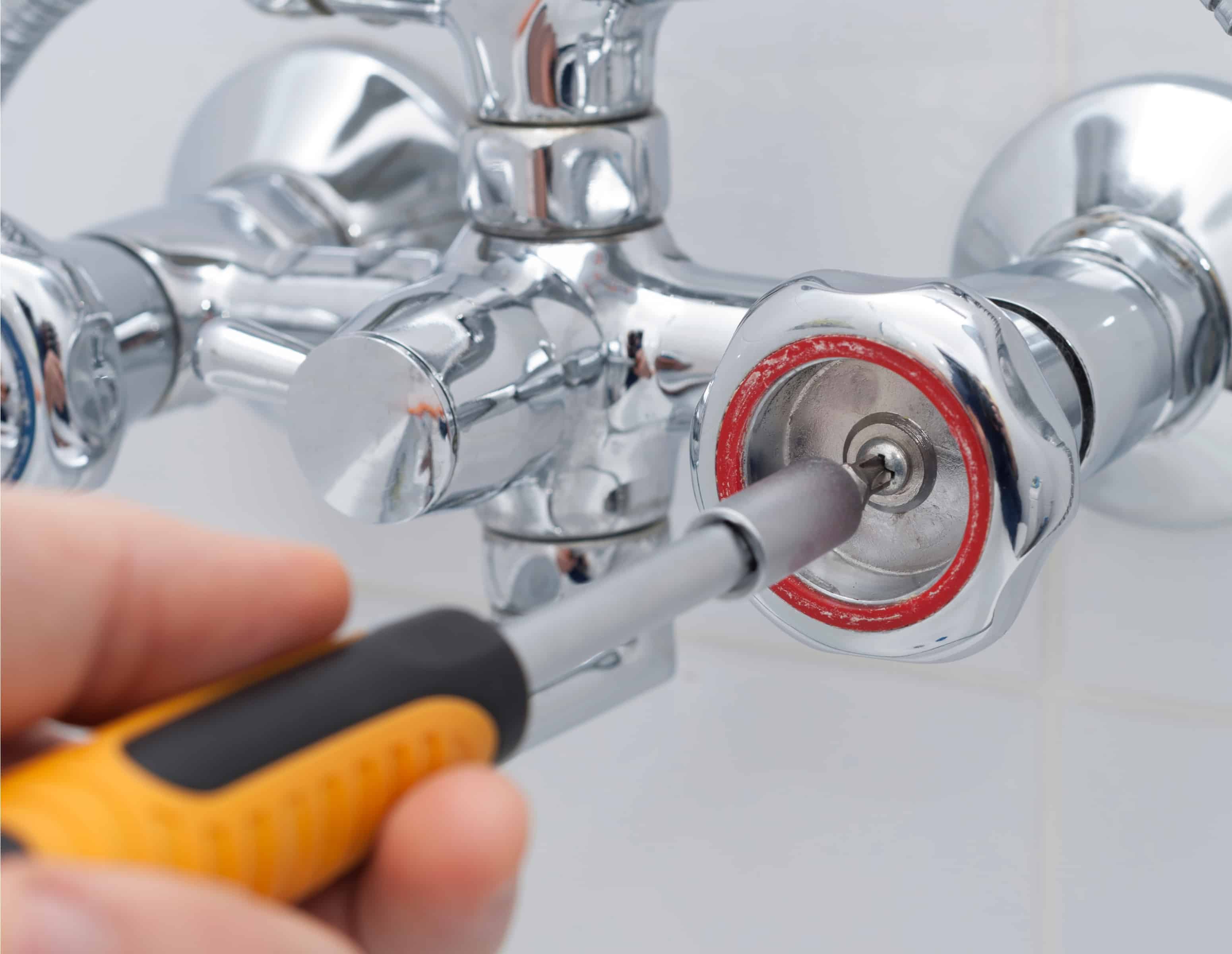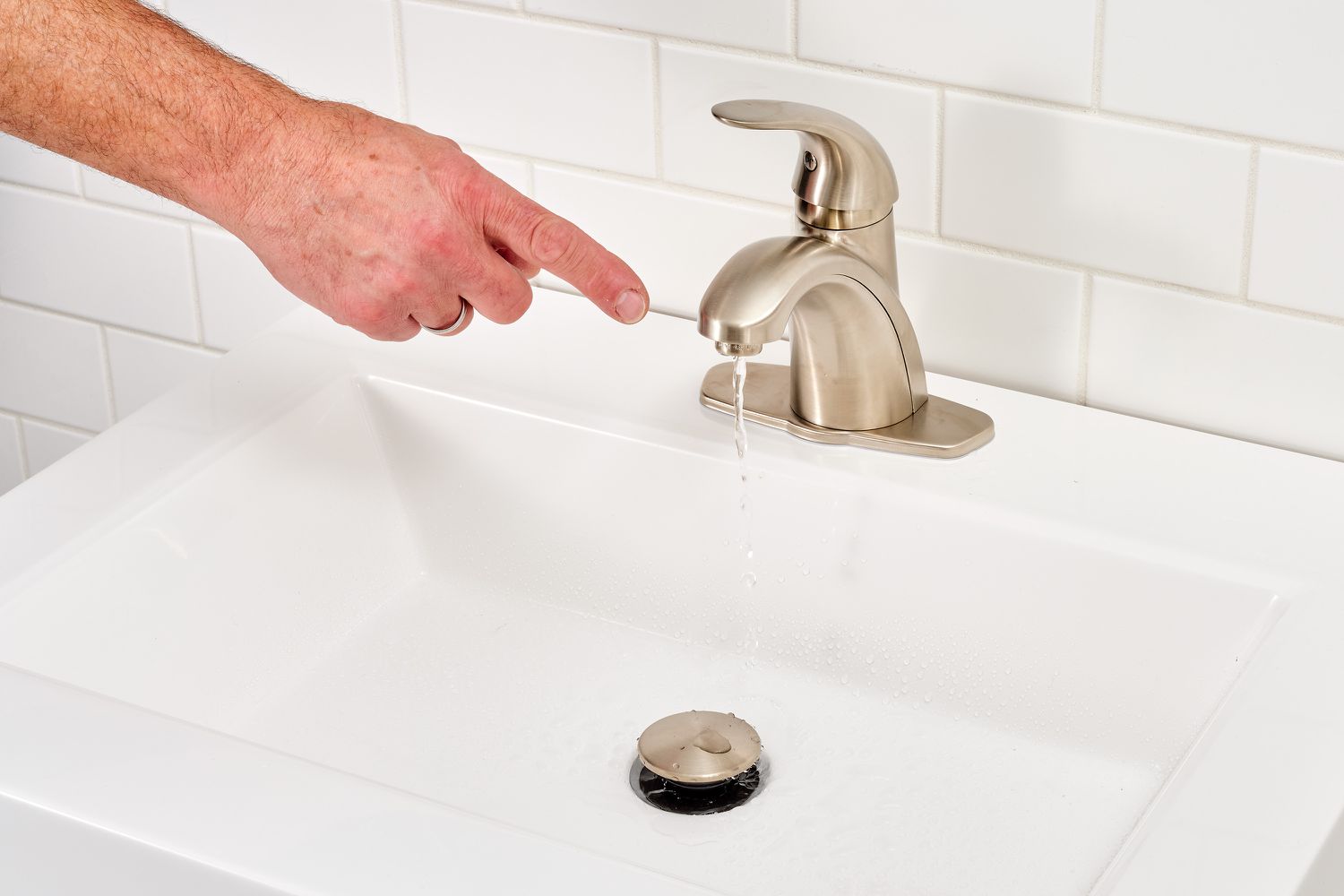Understanding the Problem

A leaking single-handle bathroom faucet can be a frustrating and wasteful problem. It’s important to understand the common causes and types of leaks to effectively diagnose and repair the issue.
Common Causes of Leaks, Single handle bathroom faucet leaking
The most common reasons for a single-handle bathroom faucet to leak are wear and tear on the internal components, mineral deposits, or improper installation.
- Wear and Tear: Over time, the O-rings, washers, cartridges, and seats within the faucet can wear out or become damaged, leading to leaks.
- Mineral Deposits: Hard water can leave mineral deposits on the faucet’s internal parts, obstructing water flow and causing leaks.
- Improper Installation: If the faucet wasn’t installed correctly, it could lead to leaks, especially if the connections aren’t tight or the cartridge isn’t seated properly.
Types of Leaks
There are several types of leaks that can occur in a single-handle bathroom faucet:
- Dripping: This is the most common type of leak, usually caused by a worn-out O-ring or washer.
- Continuous Flow: A continuous flow of water, even when the handle is turned off, indicates a problem with the cartridge or seat.
- Leaking from the Base: If the leak is coming from the base of the faucet, it could be due to a loose connection or a damaged seal.
Common Parts That Might Be Causing the Leak
The following parts are commonly associated with leaks in single-handle bathroom faucets:
- O-rings: These small rubber rings create seals to prevent water from leaking.
- Washers: Similar to O-rings, washers provide a seal between the faucet’s moving parts.
- Cartridges: The cartridge is the heart of the faucet, controlling water flow and temperature. If it’s worn or damaged, it can lead to leaks.
- Seats: The seats are located at the bottom of the faucet and help to seal the water flow.
Troubleshooting and Diagnosis

A leaky bathroom faucet can be a frustrating and annoying problem, but it’s often something you can fix yourself. By understanding the common causes of leaks and following a few troubleshooting steps, you can pinpoint the source of the leak and determine the best course of action.
Identifying the Source of the Leak
The first step in troubleshooting a leaking faucet is to determine the source of the leak. This will help you narrow down the potential causes and choose the right repair method.
- Check for drips: Observe the faucet carefully to see where the water is dripping from. Is it coming from the spout, the handle, or the base of the faucet?
- Listen for sounds: Pay attention to any unusual sounds coming from the faucet, such as a hissing or whistling noise. These sounds can provide clues about the source of the leak.
- Test the handle: Turn the handle on and off, and pay attention to how it feels. Is it loose, stiff, or does it move freely? A loose or stiff handle could indicate a problem with the cartridge or the stem.
Common Causes of Leaky Faucets
Once you’ve identified the source of the leak, you can start to diagnose the potential causes. Here’s a table summarizing common symptoms and their possible causes:
| Symptom | Potential Causes |
|---|---|
| Dripping from the spout | Worn-out O-rings, worn-out cartridge, loose packing nut, corroded or damaged washer |
| Dripping from the handle | Worn-out O-rings, loose handle, worn-out cartridge, loose stem |
| Leaking from the base of the faucet | Loose or damaged supply lines, corroded or damaged washers, cracked faucet body |
| Constant dripping | Worn-out cartridge, faulty stem, loose packing nut, corroded or damaged washer |
| Hissing or whistling noise | Air trapped in the faucet, worn-out O-rings, loose packing nut |
Inspecting the Faucet Components
Once you have a general idea of the potential cause of the leak, you can start inspecting the faucet components. This involves:
- Removing the handle: This will allow you to access the cartridge, stem, and other internal components.
- Inspecting the cartridge: The cartridge is a replaceable part that controls the flow of water. Look for signs of wear, damage, or debris.
- Checking the O-rings: O-rings are small rubber seals that prevent leaks. Inspect them for wear, damage, or cracks.
- Examining the stem: The stem connects the handle to the cartridge. Check for wear, damage, or loose connections.
- Inspecting the packing nut: The packing nut helps to seal the stem. Look for signs of wear, damage, or looseness.
Testing the Faucet
After inspecting the faucet components, you can test the faucet to see if the leak has been fixed. This involves:
- Turning the water back on: Once you’ve reassembled the faucet, turn the water back on and check for leaks.
- Running the water: Run the water for a few minutes to ensure that the leak is gone.
- Checking for drips: Carefully observe the faucet to see if any water is dripping from the spout, handle, or base.
Repairing the Leak

Now that you’ve identified the source of the leak, you’re ready to fix it. Armed with the right tools and materials, you can tackle this repair confidently.
Tools and Materials
Having the necessary tools and materials at hand will make the repair process smoother and more efficient.
- Adjustable wrench: Used to tighten and loosen nuts and bolts.
- Channel-lock pliers: Useful for gripping and turning various shapes, especially when working in tight spaces.
- Screwdriver set: Essential for removing and replacing screws.
- Replacement parts: This could include a new cartridge, O-rings, washers, or even a complete faucet assembly depending on the severity of the leak.
- Teflon tape: Used to seal threaded pipe connections and prevent leaks.
- Cleaning supplies: A cloth, sponge, and mild detergent for cleaning the faucet before and after the repair.
Replacing Worn-out or Damaged Parts
The specific steps for replacing parts will vary depending on the type of faucet and the location of the leak. However, the general process is as follows:
- Turn off the water supply: Locate the shut-off valve for the faucet and turn it off completely. To ensure the water is off, run the faucet briefly to check for any remaining water flow.
- Remove the faucet handle: Most single-handle faucets have a screw or clip that secures the handle. Remove this fastener and carefully lift off the handle.
- Remove the cartridge or stem assembly: Depending on the faucet model, you may need to remove a decorative cap or cover to access the cartridge or stem assembly. Once exposed, use the appropriate tool to remove it.
- Inspect and replace worn parts: Carefully inspect the old cartridge or stem assembly for wear and tear. Look for cracks, chips, or excessive wear on the O-rings and washers. Replace any damaged parts with new ones.
- Reassemble the faucet: Reverse the disassembly steps, ensuring all parts are properly aligned and secured. Be sure to use Teflon tape on the threaded connections to prevent leaks.
- Turn on the water supply: Slowly turn the water supply back on and check for leaks. If any leaks persist, re-tighten the connections or re-inspect the assembly for any missed steps.
Preventing Future Leaks
Regular maintenance can help prevent future leaks and extend the life of your faucet.
- Clean the faucet regularly: Wipe down the faucet with a damp cloth to remove any mineral deposits or soap scum.
- Lubricate moving parts: Apply a small amount of silicone lubricant to the faucet handle and cartridge or stem assembly to reduce friction and prevent wear.
- Inspect O-rings and washers: Periodically check the O-rings and washers for wear and tear and replace them as needed.
- Address minor leaks promptly: Don’t ignore small leaks, as they can worsen over time and lead to more significant damage.
Preventing Future Leaks: Single Handle Bathroom Faucet Leaking
Single handle bathroom faucet leaking – Once you’ve successfully repaired your leaky bathroom faucet, it’s time to take steps to prevent future leaks. By following a few simple tips, you can extend the life of your faucet and avoid costly repairs.
Regular Maintenance
Regular maintenance is crucial for ensuring your faucet’s longevity. By performing these tasks, you can catch minor issues before they escalate into major problems.
- Clean the Aerator: The aerator, located at the faucet’s spout, mixes water with air to create a smooth stream. Over time, mineral deposits and debris can clog the aerator, causing a weak or uneven water flow. Unscrew the aerator and soak it in vinegar for a few hours to remove mineral buildup. Rinse thoroughly before reinstalling.
- Inspect the Cartridge: The cartridge is the heart of the faucet, controlling water flow and temperature. Over time, the cartridge can wear down or become damaged, leading to leaks. Inspect the cartridge for signs of wear or damage, and replace it if necessary. This can be done by turning off the water supply to the faucet, removing the handle, and unscrewing the cartridge.
- Lubricate the O-Rings: O-rings are small rubber seals that prevent leaks by creating a tight seal between moving parts. Over time, o-rings can dry out and crack, leading to leaks. Apply a thin layer of silicone grease to the o-rings to maintain their flexibility and prevent leaks.
- Tighten Connections: Loose connections can cause leaks. Tighten all connections, including the supply lines, to ensure a secure seal.
Choosing High-Quality Faucet Parts
The quality of your faucet’s parts directly impacts its longevity and performance. Choosing high-quality parts can help prevent leaks and ensure smooth operation.
- Cartridge: Look for cartridges made from durable materials like ceramic or stainless steel. These materials are resistant to wear and tear, ensuring long-lasting performance.
- O-Rings: Select o-rings made from high-quality rubber, such as Buna-N or Viton. These materials are resistant to heat, chemicals, and abrasion, providing a long-lasting seal.
- Supply Lines: Choose braided stainless steel supply lines over plastic lines. Stainless steel lines are more durable and resistant to corrosion, preventing leaks and ensuring a secure connection.
